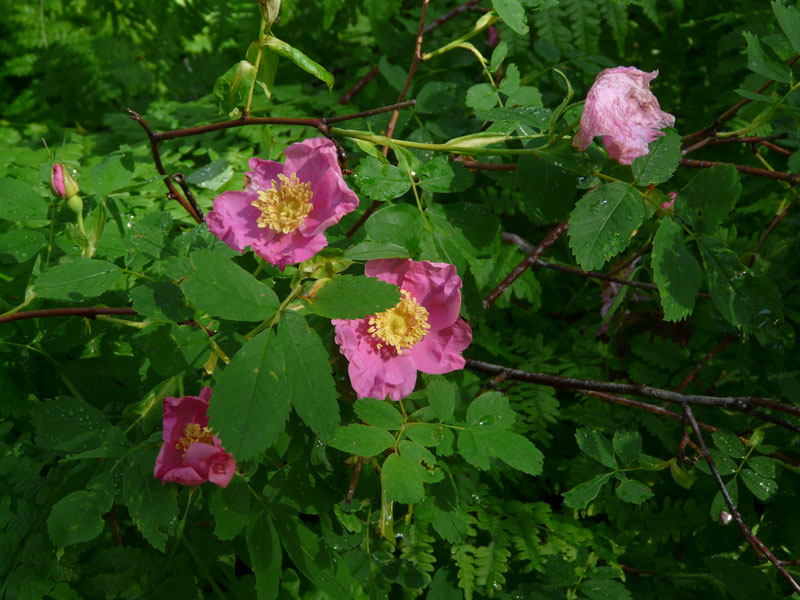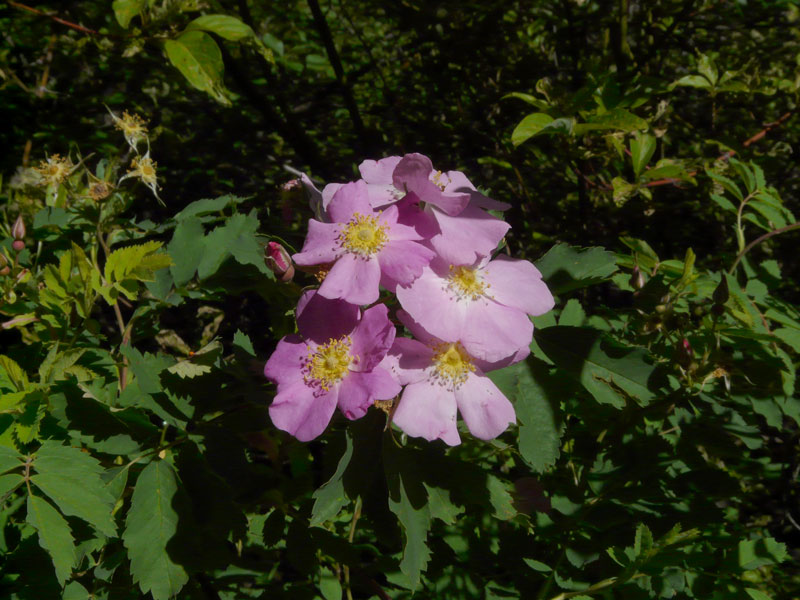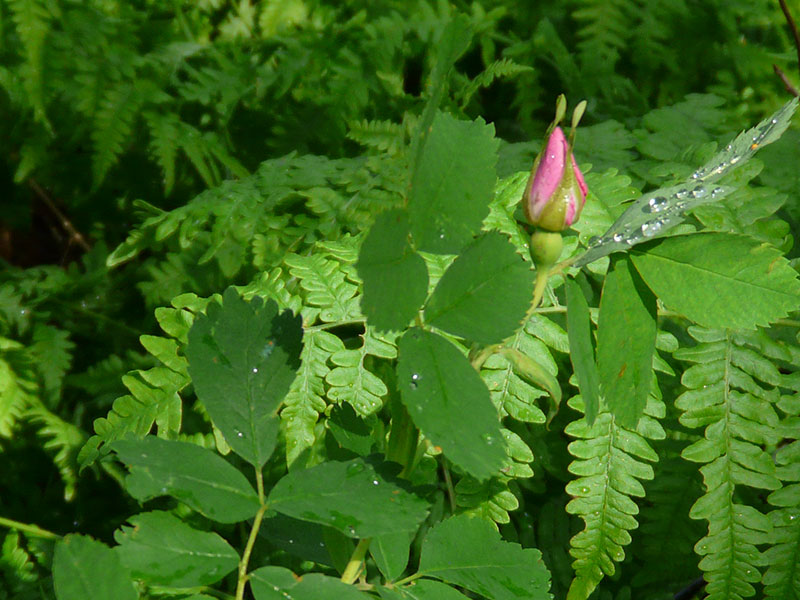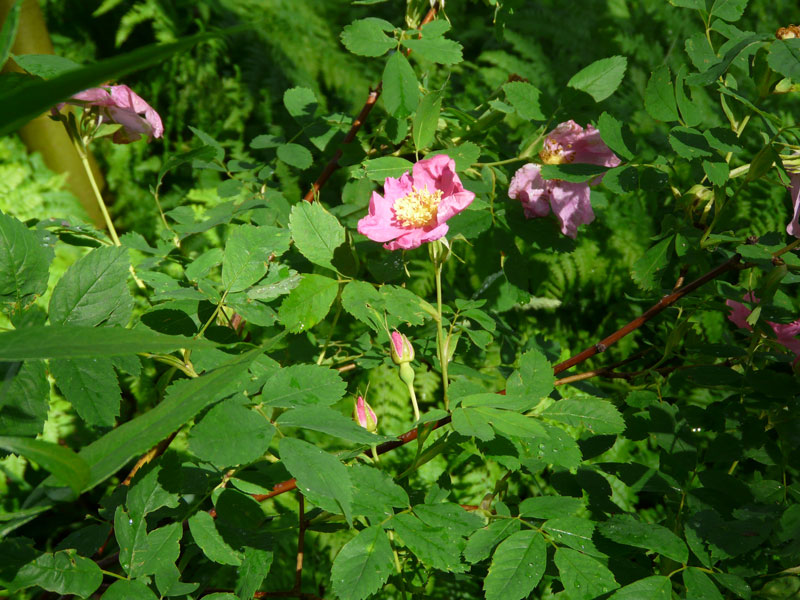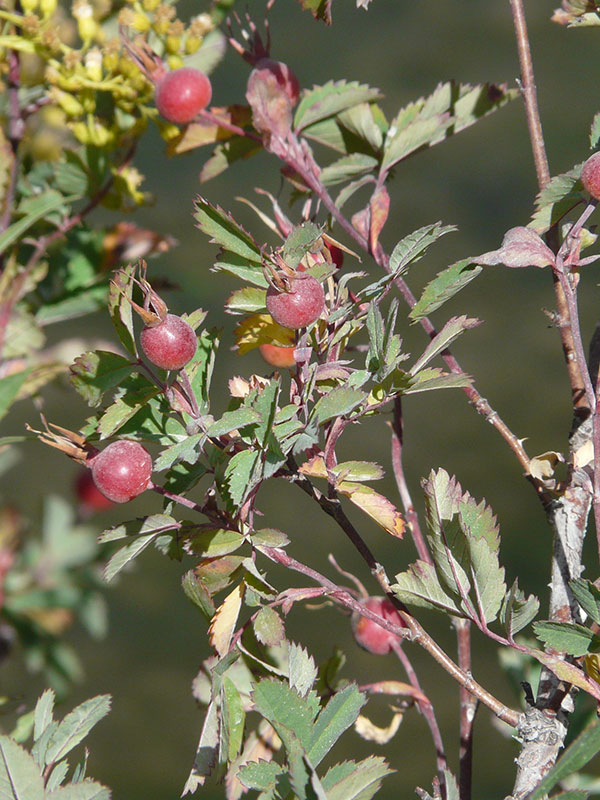Rosa spp. / wild rose
- deep red (to pink) flowers; wonderfully fragrant
- understory shrub in wetter areas
- flowers mid-summer
A rose by any other name would smell as sweet (Romeo and Juliet). On the other hand, if you hybridize it to produce lots of petals, sacrificing stamens in the process, you loose the perfume all together. The wild rose is perhaps not as “fancy” as the garden varieties, but it is so much more pleasing to the nose that it becomes more pleasing to the eye as well.
Of all the flowers in The Valley, the rose is perhaps second only to the dandelion in terms of how likely someone is to be able to name it. Given that, it is surprising that you are even looking at this description.
But “rose” is not the only part of a rose’s name. In our area, there are probably at least two species that look pretty much like this picture. R. woodsii, or Wood’s rose has not many thorns, commonly only two at the base of each leaf (according to Dee Stickler, Forest Wildflowers). That is quite probably the species illustrated here. The Nootka rose (R.nutkana), on the other hand, is characterized by compound leaves with 3-7 leaflets, with fine-toothed edges (Earle and Lunden). In both cases, the fruit, or “rose-hips” are high in vitamin-C, are full of seeds and taste pretty awful, unless you boil them up into a tea.
| Color | |
|---|---|
| Family | |
| Blossom size | |
| Inflorescence size | |
| Inflorescence type | |
| When? | |
| Where? |
